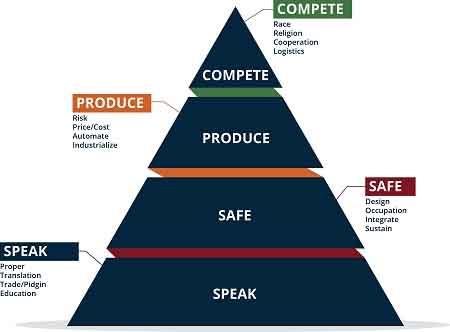To Be Or Not To Be — Phase Three: Survival
If you (we) know who you are and you’re able to manage the problem and solution separately, then the only function left to do is to determine why you are and where you are. In other words, how did you get here, which detected and/or undetected risks ignited to cause all of this in the first place?
However, while this resembles the typical unbiased lessons learnt exercise, it may be more suited at this point to address the missing puzzle nobody talks about because it is directly related to strategy, something “we” don’t want the “other” to know.
That is of course “opportunity” knocking on your door since opportunity is the flip side of risk. This opportunity will motivate and drive the change required of your organization to ensure your survival, i.e. the permanent third phase. Survivability (existential) analysis is a known activity in the field of System Engineering which is different to how Politicians or Executive Managers see it i.e. which is to just get re-elected or “transferred.”
(Note: it is probably fair to say that the System Engineering process is the original attempt to look for and manage all risks and very, very few people even know about it)
Since we are in the midst of the COVID-19 disaster it is appropriate to understand the basic meaning of disaster in general. A disaster is an event that causes widespread social, human, material, economic, or environmental loss which exceeds the ability of the affected area to counter-produce, or generate enough resources to survive it.
Many argue that all disasters are of a human origin, since a community needs to prepare for periodic interruptions and be able to counteract them. Therefore, a disaster exposes the inability of humans to counter it, basically a failing at proper risk management. It is truly as Queen’s music lyrics state:
You’re headed for disaster
‘Cause you never read the signs
Too much love will kill you – every time
During “disaster development” and after “recovery rollout” becomes more visible and you start to realize how y’all got here using normal management techniques, one competitive edge to take you further might be your organization’s ability to think creatively. This may be important because only 2% of adults above 25y are creative. At the organizational level, it is possible to increase creativity by using techniques to go from a low to a high level of expertise.
This will re-focus priority on problem solving during dimensional feedback to employees where the standard version is something like this
- Specialist knowledge
- Management knowledge
- Interpersonal ability
- Problem solving
- Freedom (ability) to act
However, enhancing the creative spirit at organizational level is largely determined by:
- Team support 66%
- Enough time 15%
- Organization climate 11%
- Challenging 5%
- Freedom 3%
But alas, the above is all about managing downwards while a lot of the risks we missed to date are upwards. This falls largely within the culture of the organization and its primary clients and has led to the formulation of the following survivability pyramid:
Taking all of the above into consideration, the initial opportunities that came to mind are as follows:
- The first opportunity to beat the opponents is to speak proper language thereby having the ability to turn the opponent organization’s word against it. (It’s the basis of high culture)
- The second opportunity to beat the “other” organization is to perpetuate a masculine culture dimension. (It has a better performance outcome)
- The third opportunity is to beat the “other” organization at proper risk management functionality. (That does not mean too perfect, because you may fall in love with idealized perfection)
- The fourth opportunity is to beat the “other” organization at managing hubris. (Arrogance is self-defeating)
- The fifth opportunity is to limit the life span of organizations. (To improve succession)
While attempting to accommodate these changes, the same characteristics mentioned before will apply to your organization i.e. hierarchy, dominance and freedom. Be careful not to “change” or “transform” your organization, because it (life and success) is temporary, after all.
Tags: disasters, management











